Appeared on Pg.55 of the Commemorative Volume “Grand Centennial, Connecting people — 100th Anniversary of of the Founding of the CPC” Commemorative Volume published by the Consulate General of the People’s Republic of China in Mumbai held in May 2021 (https://www.freepressjournal.in/business/poverty-alleviation-a-great-service-to-humanityhttp://www.asiaconverge.com/2021/05/povert-alleviation-a-great-service-to-mankind/). Also refer to the Tweet at https://twitter.com/ChineseCGMumbai/status/1450001462709293061?t=dDcmlnt8_fky0Pj1F9m8mg&s=19
In the quest for poverty alleviation
By RN Bhaskar
“If your plan is for one year, plant rice; if your plan is for ten years, plant trees; if your plan is for one hundred years, educate children.”
— Confucius
ABSTRACT
One sector, in which India has transformed the very rules of business is dairy farming. India is the largest producer of milk, the second largest producer of leather footwear and other leather items, and the largest or second largest exporter of beef (it changes periodically) in the world.
What made India excel? Can India become the milk producer for the entire world?
———————————————————————–
It is important to state at the very outset, that no country has shown the ability to remove an entire population out of poverty within just one lifetime as has China. It was to have achieved almost total poverty eradication – in technical terms – by 2020. But the coronavirus epidemic left is short by a few millions (see chart) [1][2]
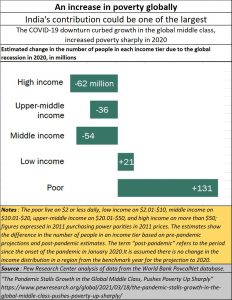
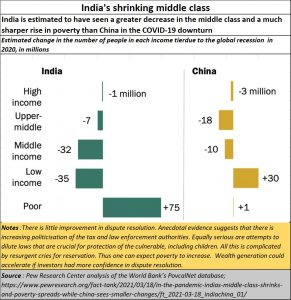 The pandemic was harsh for the entire world. More people were pushed out of the middle- and small-income categories and clubbed among those who are poverty stricken. The world has probably never seen such a mass scale increase in poverty as during the pandemic. The world saw an increase of 130 million poor people.
The pandemic was harsh for the entire world. More people were pushed out of the middle- and small-income categories and clubbed among those who are poverty stricken. The world has probably never seen such a mass scale increase in poverty as during the pandemic. The world saw an increase of 130 million poor people.
Eradicating poverty is critically important. This is because poverty saps the human spirit. It cripples national, even international, resolve to be counted among the best in the world. More seriously, since most poor people can be found in developing or under-developed countries, the temptation to use the poor as cannon fodder for political rallies is always a tempting thought for unscrupulous rulers.
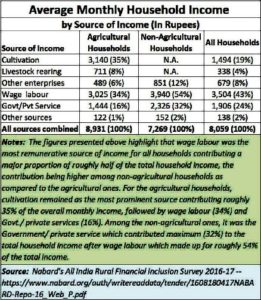 Moreover, since India is one of the biggest casualties during the pandemic – it added 75 million people to its existing poor population – it must arrive at some answers soon, which work, and which should ideally be replicable.
Moreover, since India is one of the biggest casualties during the pandemic – it added 75 million people to its existing poor population – it must arrive at some answers soon, which work, and which should ideally be replicable.
In this context it is important to consider three areas
- Rural prosperity
- The need for education
- Unusual experiments in education which can be scaled up.
However, the scope of this paper is only to examine rural poverty and dairy farming. The other subjects could be part of another paper. Some of the views of education and unusual experiments in education can be found in the author’s book.[3]
Rural Prosperity is possible
The reason for focussing on rural poverty alleviation are many. But the most important reason is that much of poverty in India – over two-thirds — is in rural areas.
That is where almost 65 per cent of India’s population dwells, and almost all of them are dependent on rural productivity[4] . This needs a bit of clarification though. An estimated 15% of the population migrates between rural and urban areas. Many people work as labourers, drivers, and office helps. When it is seed sowing or harvesting time, many of these urban workers flock back to their home villages.
Almost all of them are directly or indirectly linked to agriculture and related activities. Most of them are marginal farmers, even landless farmers – sharecroppers – working on fields belonging to others.
The trouble is that cultivation income is very meagre (see table)[5]. And the only way a farmer can manage his monthly expenses is by working on jobs not related to the farm. Without this additional income, the farmer would be desperately poor. In fact, as the table shows, farmers on an average earn barely 700 a month from livestock rearing when they should be earning at least Rs.3,000. The reasons for that are explained later.
But overall, farmers earn less because of two reasons:
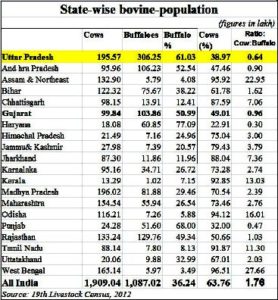 First, India has not invested enough in systems which ensure that the farmer gets a fair price for his produce. In vegetables, most farmers get barely 10% of the market price. And when there is oversupply, many must throw away their crop, as there is no preservation facility available, and those that can be got are far too expensive.
First, India has not invested enough in systems which ensure that the farmer gets a fair price for his produce. In vegetables, most farmers get barely 10% of the market price. And when there is oversupply, many must throw away their crop, as there is no preservation facility available, and those that can be got are far too expensive.
Second, there are too many people in agriculture, especially when examined as contributing just 17 per cent to national GDP. This means that one of three things will happen.
- a) Some people will have to leave rural India and agriculture
- b) The value of agri-output will have to increase, either through inflation or through the introduction of value-added produce.
- c) Both of the above.
This author believes that the third alternative will take place. If the government creates the right policies, there will be no large-scale migration. Villages can be encouraged to grow into towns with more value-added activity – like food processing. And some towns will become cities. But national planning to make this transition take place has been patchy, if at all.
Dairy farming
The immediate way out is to focus on dairy farming. This is because it is the fastest ways to increase rural prosperity.
Today, there are over 100 million households dependent on dairy farming. Most families don’t even own land. They just tie up their cattle in the backyards of their housesat night, and during the daytime take them out to graze. Almost 80% of the milk comes from farmers who own between 2 and 5 cattle-heads.
Five decades ago, cows accounted for much of the cattle population in the key milk producing states of Uttar Pradesh and Gujarat. Overall, in India, there are more cows than buffaloes. But that is because Southern and Eastern states, which were not conventionally milk producing areas, have begun rearing cows. This is largely due to the cattle slaughter ban which is more prevalent in the Northern and Western states. Thus, the key milk producing centres have seen a decline in cow population (see table)[6]. Most Southern and Eastern states have not adopted the ban on cattle slaughter.
Another reason favouring the adoption of buffaloes is that there is more fat content in buffalo milk. Farmers get paid for milk based on fat content. Hence, they find buffaloes a bit more profitable.
But, as we shall see later, the population of cattle overall has begun to decline, thanks to the ban on cattle slaughter.
Kurien’s genius
The man who made the Indian dairy industry formidable was Dr. Verghese Kurien[7].
This author learnt a great deal from him about strategic advantage. Given below is a discussion of a crucial discussion he had with him in the late 1980s.
One evening while Kurien and the author sat together chatting, Kurien explained the driving force behind his vision. “I predict that within the next decade India will become the world’s largest milk producer,” he declared. The author nodded politely, aware that India was struggling to even retain its place as the sixth largest producer of milk.
Kurien suddenly asked, “What is India’s population?”
“Around 800 to 850 million,” said the author, which was the figure at that time.
“Correct!” said Kurien. “And what is the staple diet of most Indians?”
“Mainly rice and wheat,” replied the author.
“Exactly,” he declared. “And this is where India has the biggest advantage in the world.”
“I don’t quite understand,” said the author.
Kurien was triumphant. “You see, most Indians consume rice and wheat. For every kilo of rice or wheat that is consumed, there are three to four kilos of chaff. That chaff is consumed by cattle. Food for cattle is a natural by-product. In almost every other country, farmers must grow food for cattle. In India, it comes free. Thus, India is bound to remain the lowest cost producer of milk in the world. Since the first job of any government is to feed its people, there will always be rice and wheat production. Hence, there will always be food available at a marginal cost for cattle.”
“But doesn’t China have the same advantage?”
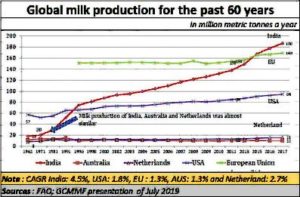 “Aha! That is where God has been kind to India. China also consumes rice. But most Chinese people cannot digest milk. You cannot become a global power of a product easily if you do not have a large enough market at home. China has the opportunity but will not become the world’s largest producer precisely because its population won’t let it!”
“Aha! That is where God has been kind to India. China also consumes rice. But most Chinese people cannot digest milk. You cannot become a global power of a product easily if you do not have a large enough market at home. China has the opportunity but will not become the world’s largest producer precisely because its population won’t let it!”
India became the world’s largest producer of milk – just as Kurien predicted – by the turn of the century. But with many European countries clubbing together as EU, India had to wait a little longer – till 2014 – to overtake the EU as well (see chart) [8]
This was one of the first major lessons for the author in understanding the natural strategic advantages that countries must recognize and then exploit. Kurien[9] was doing just that. He had discovered in milk what very few people had discovered so far.
The GCMMF, Amul and NDDB vision
Kurien’s genius lay in recognising that if the farmer is paid more for his product, and is protected from the vagaries of fickle market pricing, production was bound to increase. He was also aware that as production increases, the customer would have to be persuaded to pay higher prices, and even consume more. But to prevent a backlash from consumers, he ensured that prices would not go up by more than 5% annually. This gradual price increase of milk and the protection from market price vagaries were the two factors that encouraged milk farmers to produce more.
But to do that, he had to create another institution – the NDDB (National Dairy Development Board). He managed to persuade former Prime Minister Lal Bahadur Shastri – to whom credit must go for both the milk and agricultural revolution in India, though others have tried to usurp credit – to create the NDDB through an act of Parliament. It became the milk promotion body, but without depending on government funds.
What NDDB did was to ensure that (a) all dairy products that India received as gifts or (b) exceptional imports would be canalised by NDDB. It would sell the dairy products in the market gradually at market prices and use the surplus money for market development. It would also create rules and regulations for milk cooperatives in the country. These cooperatives were required to purchase milk only from other cooperatives, and thus not encourage the middlemen who exploited farmers.
Thus, without government grants, Kurien ensured that the dairy industry would grow.
Simultaneously, he created a cooperative structure where, at the grassroots level, every farmer had one vote irrespective of the number of cattle he held. Several cooperatives in a region joined hands to become the district cooperative – again with each cooperative having just one vote. The districts themselves formed a federation where voting also included the quantity of milk produced, thus acknowledging the relevance of market size.
The farmer gets the larger share
Kurien wanted at least 50 per cent of the market price to be paid to the farmer. He believed that since the farmer was more important, being the producer, his share had to be larger than that of any other player. But that posed a problem because, globally, the processors got a third and the distributors and marketing sectors got the remaining third, leaving only a third or the farmer.
That left Kurien with no alternative but to take over marketing and distribution, procurement, and processing under the control of the Federation. This Federation became the GCMMF (Gujarat Cooperative Milk Marketing Federation) which sells dairy products under the Amul brand[10].
Today, the Federation ensures that 80-85 per cent of the market price of milk and dairy products goes back to the farmers. In other words, it has managed to compress all procurement, processing, distribution, and marketing costs to just 15-20 percept of the market price [11]. This is unheard of in global markets. What is even more significant is that almost all farmers are paid the price of the milk they offer to the cooperatives for being processed and sold by GCMMF on the daily basis. This is because it realises that poor people need cash on a daily basis. They cannot plan expenditure even for a week. As affluence begins to take roots, people begin planning finances for longer periods.
In many other cooperatives and private sector companies – which have learnt to emulate the Kurien model, the farmers are paid once a week. But the philosophy is the same. The farmer is allowed to get at least Rs.26 per litre for cows’ milk (which has less fat content) and at times as much as Rs.80 per litre for buffalo’s milk. Thanks to better cattle feed encouraged by the cooperative sector and progressive private sector players, farmers earn a profit (all income less expenditure) of around Rs.100 per cattle per day for 300 days a year. The remaining days are used up in making the cattle go dry and ready for the next round of insemination.
Kurien also helped develop a host of ancillary companies to make the dairy movement stronger – for cattle feed, artificial insemination (NDDB’s semen plants are the largest in India[12], dairy processing machinery, vaccines, and finance.
Beef and leather
The milk industry is crucially important for India because of another  reason. It supports the well-being of other industries as well.
reason. It supports the well-being of other industries as well.
One of them is beef. Unlike beef from elsewhere, beef from India is in much demand because it comes from cattle that have been given healthy feed. Unlike Western countries where cattle are grown only for their meat, and hence fed hormones and even offal, Indian beef is a by-product of cattle that are reared primarily for milking. Beef is a by-product. It is often free from contaminants that beef from other countries have. It thus is again on a marginal costing basis and can withstand global competition quite well.
The beef is got by skinning the dead cattle. That gives rise to the leather industry, which too gets hides at costs that are lower than elsewhere in the world. Today, the leather industry is a big employer. Moreover, both beef and leather are foreign exchange earners.[13]
The potential
But the potential the dairy sector holds out for the country is immense. This is because, currently, barely 24% of the milk sold in India comes from the organised sector. The rest is sold by the unorganised sector, and is sourced from farmers at pathetically low prices. This is because the cooperative movement has not reached these territories.
At times, state governments, in league with unscrupulous middlemen, try to ensure that the cooperative movement does not reach these regions. This includes the state of Uttar Pradesh, which is the largest milk producing state in India. Its farmers are paid barely Rs.16-18 per litre while the organised sector pays upwards of Rs.26.
If the unorganised sector could also be brought under the organised sector, the dairy industry could grow by leaps and bound. India’s GDP would grow immediately, and rural prosperity would soar. Already, milk accounts for almost 7-8% of India’s GDP, two or three times the total value of rice and wheat combined. However, much of political attention goes to rice and wheat probably because it is grown by regions that are politically more relevant for any ruling party.
The unfairness of the unorganised sector can be seen from the first table which shows livestock income at just Rs.711 er month. It should not be less than Rs.3,000 per month, considering profitability of Rs.100 per cattle per day. Many farmers have 2-4 cattle-heads in their backyards. Thus, the income for farmers could soar if the right processes were put into place.
This is where government policies need to be streamlined. The ill-advised move to ban cattle slaughter – mostly on ideological 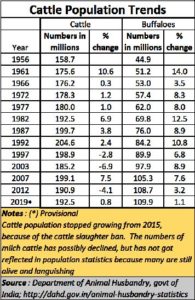 grounds – has hurt the cattle industry. It is possible that cattle rearing will soon migrate to East India – even away from Uttar Pradesh.
grounds – has hurt the cattle industry. It is possible that cattle rearing will soon migrate to East India – even away from Uttar Pradesh.
As the table[14] alongside shows, the growth in cattle population has begun declining since 2014, when the cattle slaughter ban got introduced. The actual number of milch cattle may have declined, but that does not get registered in this table because the old cattle are still alive, languishing. However, with better yields per cattle, milk production continues to soar.
Many policymakers have also been extremely critical about the government offering subsidies to milk producers[15]
Kurien showed that subsidies make businesses more dependent on governments and bureaucrats. He was convinced that the best way to self-reliance was to stay clear of subsidies and doles. They invariably penalise the efficient, and promote inefficiency and later demise.
Recent budget proposals too have not been exceedingly kind for this sector[16]. But the cooperative sector is quite united and could compel the government to roll back some of these undesirable proposals. This is precisely what happened when the government almost sold off India’s interests by allowing New Zealand to export dairy products to India under the RCEP negotiations[17]. Fierce opposition from the dairy sector, compelled the government to retract, and the proposal was cast aside.
Clearly, when India can do so much with just 24% of the milk production in the organised sector, a lot more is definitely possible. The fact that this sector has promoted women entrepreneurship is another critically important social development indicator. In countries like India, women keep families together. They manage family incomes. And when they are harnessed into enterprise – like animal husbandly – the entire villages, hence the country, benefits.
This will therefore remain the backbone for rural prosperity for quite some time more.
Footnotes
[1] https://www.pewresearch.org/fact-tank/2021/03/18/in-the-pandemic-indias-middle-class-shrinks-and-poverty-spreads-while-china-sees-smaller-changes/ft_2021-03-18_indiachina_01/
[2] https://www.pewresearch.org/global/2021/03/18/the-pandemic-stalls-growth-in-the-global-middle-class-pushes-poverty-up-sharply /
[3] Game India-seven strategic advantages that could steer India to wealth (Penguin); Author: RN Bhaskar
https://tinyurl.com/y5noov5h available from Amazon in book and Kindle versions.
[4] https://tradingeconomics.com/india/rural-population-percent-of-total-population-wb-data.html
[5] http://www.asiaconverge.com/2020/01/economic-revival-depends-on-agriculture/
[6] 19th Livestock Census, 2012
[7] Game India-seven strategic advantages that could steer India to wealth (Penguin); Author: RN Bhaskar
https://tinyurl.com/y5noov5h available from Amazon in book and Kindle versions.
[8] FAO and GCMMF sources
[9] http://www.asiaconverge.com/2013/05/strategic-vision-kurien-style/
[10] http://www.asiaconverge.com/2015/12/five-things-that-sets-amul-apart-from-others/
[11] http://www.asiaconverge.com/2018/03/fpj-moneycontrol-forum-doubling-farmers-income-cold-chain/
[12] http://www.asiaconverge.com/2019/09/cattle-semen-breeding-story-india-proud/
[13] http://www.asiaconverge.com/2021/05/agenda-1-dont-meddle-with-the-dairy-sector/
[14] Department of animal husbandry, government of India
[15] http://www.asiaconverge.com/2020/04/for-milk-subsidies-is-the-path-to-perdition/
[16] http://www.asiaconverge.com/2021/02/budget-2021-has-little-for-animal-husbandry-and-marginal-farmers/
[17] http://www.asiaconverge.com/2019/08/indian-bureaucrats-almost-shortsold-the-milk-industry-at-fta-cpec-negotiations/
Select videos:


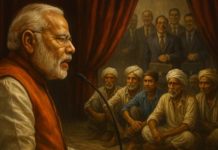

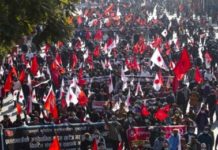
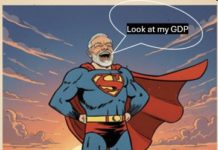























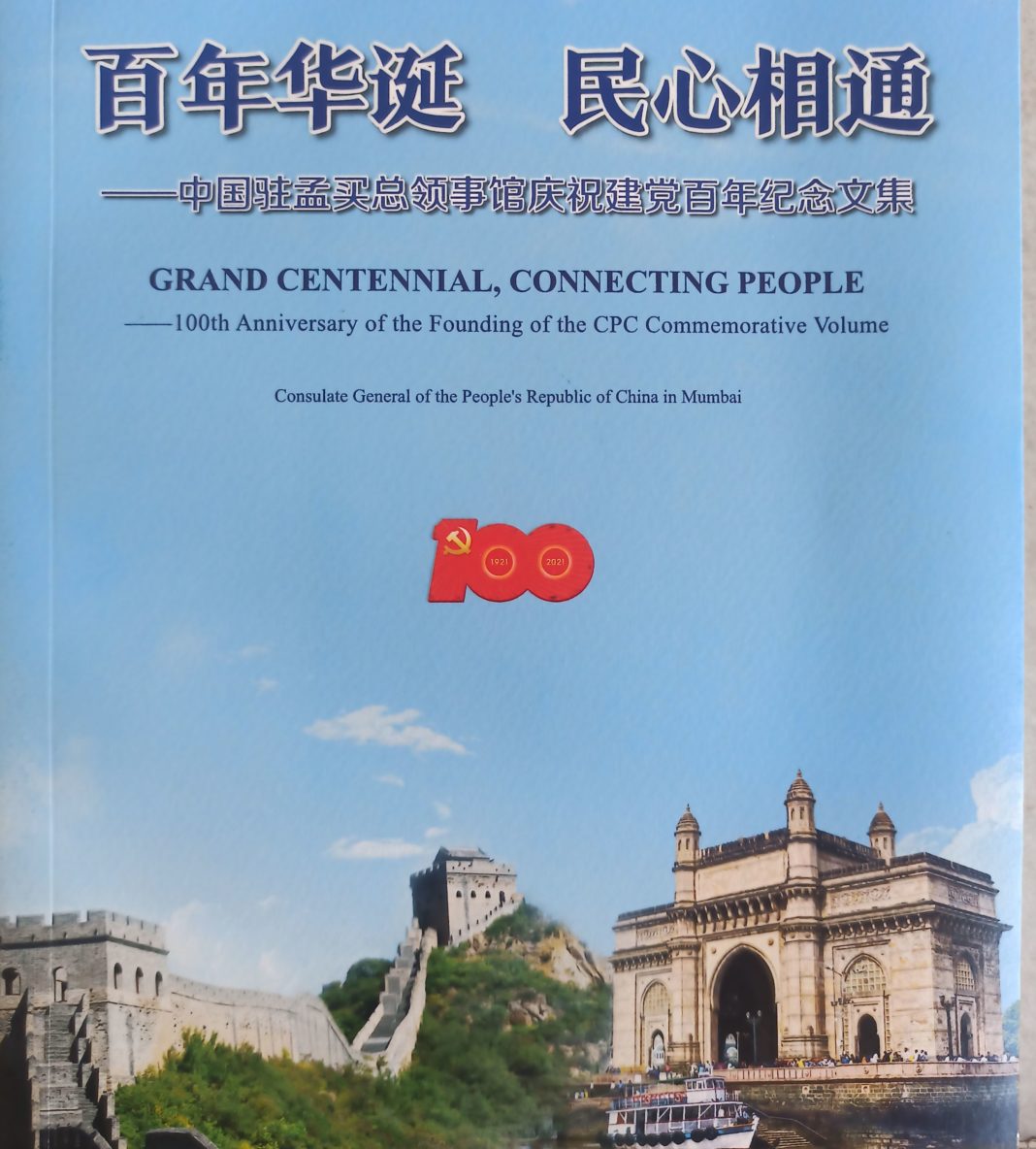












COMMENTS